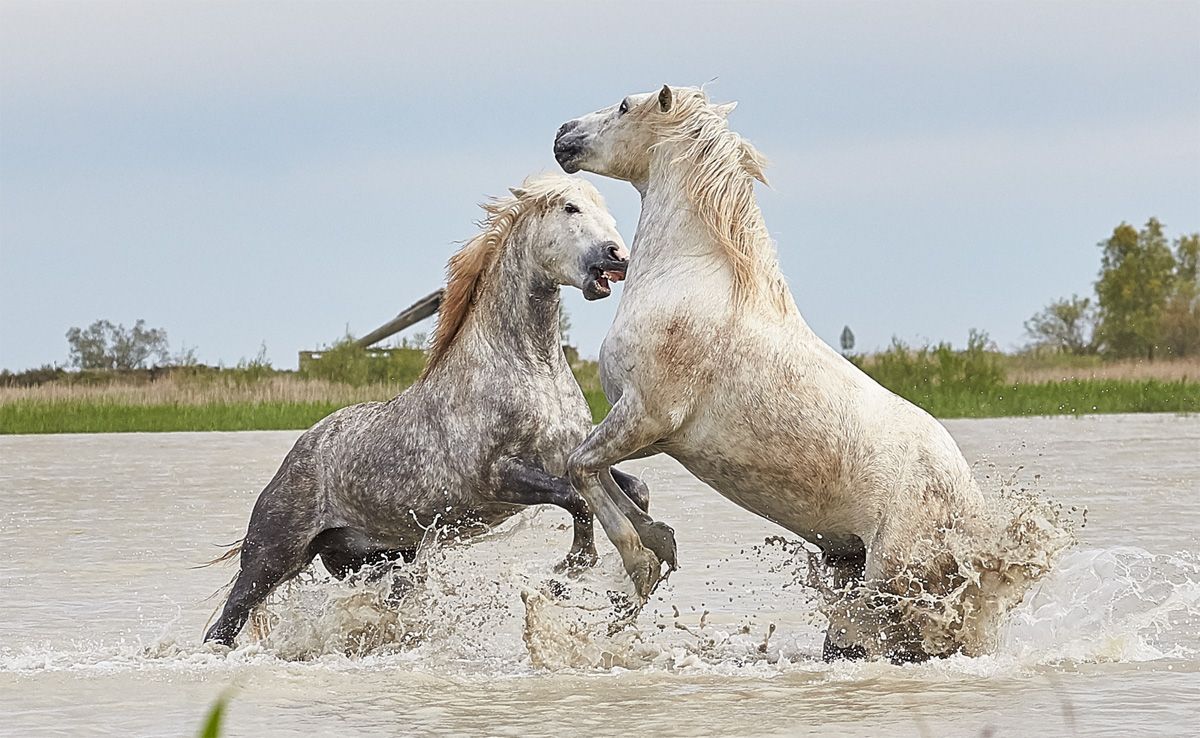
In the marshlands of southern France, where the Rhône River meets the Mediterranean, lives one of Europe’s most iconic animal populations: the Camargue horses. These semi-wild, chalk-white horses are more than just a photogenic symbol of the region — they embody centuries of cultural tradition and a delicate ecological balance.
A Breed Shaped by the Wetlands
The Camargue horse is one of the oldest breeds in the world, adapted to the harsh environment of salt marshes, lagoons, and reed beds. Born dark brown or black, they gradually turn white by adulthood. Their hardiness allows them to thrive outdoors year-round, grazing on salty grasses that few other animals can digest.
Bureaucracy? Bonne chance.
These horses play a vital role in maintaining the Camargue’s unique ecosystem:
-
Natural lawnmowers: Their grazing prevents overgrowth of reeds and maintains open habitats for migrating birds.
-
Biodiversity partners: By moving through wetlands, they help disperse seeds and create microhabitats for amphibians and insects.
The Gardians and Their Traditions
The horses are deeply tied to the gardians — the traditional cowboys of the Camargue. For centuries, gardians have used these horses to herd black Camargue bulls. This pastoral way of life has shaped the region’s festivals, dress, and identity.
Key Cultural Touchpoints:
-
Ferias: Annual festivals celebrate bull games, horse demonstrations, and Camargue folklore.
-
Equestrian displays: Visitors can watch gardians perform intricate riding techniques, showcasing the close bond between human and horse.
Although the Camargue horse population is relatively stable, conservationists work to maintain genetic diversity and protect their wetland habitat from urbanization and climate change. Some herds are left completely free-ranging, while others are semi-managed by local breeders.
A Photographer’s Dream
At sunrise or sunset, these white horses galloping through the shallows create some of the most striking images in European wildlife photography. Many tours now cater to visitors eager to witness this spectacle — though responsible tourism is crucial to avoid disrupting the herds.
Why They Matter
The Camargue horses are living symbols of resilience — not just for their breed, but for the entire wetland ecosystem. They represent a rare harmony between tradition, wildlife, and human stewardship.
Would you like me to include travel tips (best times of year, ethical ways to see the horses) or keep it purely focused on ecology and cultural heritage?